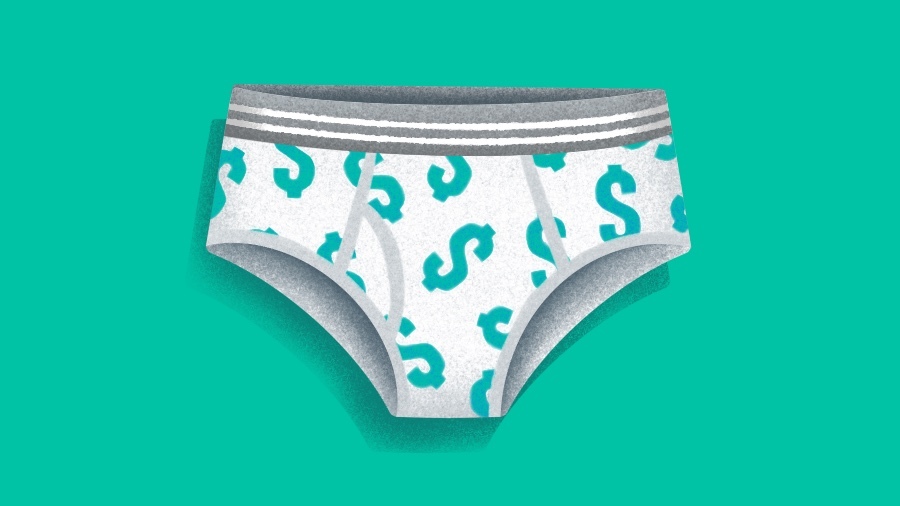Underwear brands are having a bit of a moment in the venture capital world.
Globally, VC-backed underwear and lingerie companies raised $457 million in funding last year—the highest amount in at least five years, Crunchbase data shows. Kim Kardashian’s shapewear brand SKIMS and Rihanna’s lingerie brand Savage X Fenty were among the largest funding rounds. Other notable raises last year include Parade’s Series A and Series B, which totaled $30 million together, and Canada-based Knix Wear’s $53 million Series B.
Underwear companies aren’t exactly reinventing the wheel. But, there is a big market opportunity, especially after the dominant player in the women’s underwear market–Victoria’s Secret–failed to adapt to changing tastes and fell out of favor with many consumers. The lingerie giant’s market share fell from 32 percent in 2015 to 19 percent in December 2020, according to Women’s Wear Daily.
Search less. Close more.
Grow your revenue with all-in-one prospecting solutions powered by the leader in private-company data.
Victoria’s Secret, known for its supermodel spokeswomen and provocative ads, spent the better part of a decade marketing to millennials that intimates should be sexy, prioritizing appearance over comfort, according to Caitlin Strandberg, a partner at Lerer Hippeau, which has invested in underwear brands like Parade and CUUP.
“The most important thing really, is this notion that the consumer has changed, and really a lot of retailers are way, way, way behind the curve,” said Paula Rosenblum, co-founder of retail advisory firm RSR Research. “They don’t realize that, yes, all kinds of women want to feel sexy. They don’t want to worry that they’re going to hit the edge of the size barrier, small or large. Sustainability is really important. Social good is really important.”
The upcoming generation, Gen Z, values other qualities.
“They value inclusivity, they value self-expression, they value, I would say, diversity and inclusion, but they’re looking for products that they’re proud to wear,” Strandberg said.
The largest funding rounds for VC-backed underwear startups in 2021 went to:
- SKIMS: $154 million, led by Thrive Capital;
- Savage X Fenty: $115 million, led by L Catterton;
- NEIWAI: $100 million, led by The Carlyle Group;
- Knix Wear: $53 million, led by TZP Group; and
- Parade: $20 million, led by Stripes.
Market timing is also a big part of it, according to Strandberg. Five years ago it would have been much more difficult for a Gen Z-focused underwear brand to find success as the generation was still young teens with less discretionary money to spend.
Parade, she added, came up right at a demographic transition for its consumers. And it incorporated elements of social good into its business (shoppers can donate 1 percent of their order to nonprofits focused on issues like sexual education and reproductive rights)–something Gen Z values.
In Parade’s case, Strandberg noted, the Gen Z consumer was underserved by the incumbents, creating an opening for companies like Parade and CUUP to move in.
The economics of underwear
Underwear is something (almost) everyone wears. It’s also a category with high customer loyalty—once a consumer finds underwear they really love, they tend to keep buying it, according to Strandberg.
“Candidly, you’re looking for a large market, it’s like any other venture bet where consumers spend and they spend often,” Strandberg said. “This is a space where repeat buying and purchasing is fairly consistent.”
Search less. Close more.
Grow your revenue with all-in-one prospecting solutions powered by the leader in private-company data.
Underwear is one of the easier items of clothing to take the direct-to-consumer route, Rosenblum said, because once a customer knows the sizing, they can keep ordering online.
DTC underwear brands also don’t tend to have to deal with high return rates, which helps their bottom line, because underwear is relatively cheap and many consumers won’t bother returning it. It also doesn’t have to fit perfectly, as long as it’s comfortable, Rosenblum added.
“(Investors) like the idea of not having stores if they can get away with it, they’re still under the misconception that you can have a successful retailer without stores,” Rosenblum said. “But of all the spaces, underwear can get away with it.”
Some VC-backed underwear brands have established a physical presence. Parade opened its first store last month and shoppers can now buy SKIMS at Nordstrom, for example. But DTC underwear brands can also market their products fairly inexpensively online during a time when many consumers are more comfortable shopping online than in-person.
Gen Z and millennial buyers were already spending more time online, behavior that was “supercharged,” during the pandemic, Strandberg said.
That, combined with new players more in touch with diversity, inclusion and comfort set DTC underwear brands up to succeed.
“It’s the wrong time for ‘let’s be the most beautiful woman in the room,’” Rosenblum said. “It’s much more of ‘let’s be the most beautiful women we are.’”
Illustration: Dom Guzman

Stay up to date with recent funding rounds, acquisitions, and more with the Crunchbase Daily.






![Illustration of a magnet attracting various products. [Dom Guzman]](https://news.crunchbase.com/wp-content/uploads/mergers_and_acquisitions-300x168.jpg)



67.1K Followers